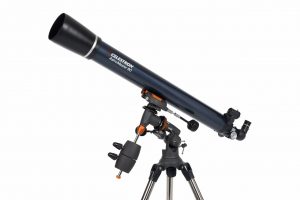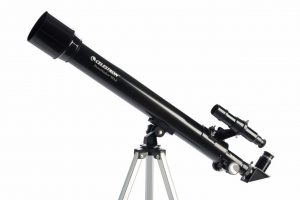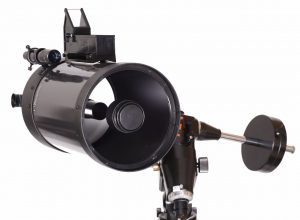Star Gazing is one of the oldest and best hobbies and if you’re looking to take your astronomical experience to a whole new level then picking up a new telescope is where it all begins. Star gazing encompasses so many facets of astronomy which is a misconception in itself as it’s defined as, “one who gazes at stars”, but has nothing to do with what one sees through the naked eye.
Astronomy encompasses a telescope and visual observing of celestial objects which can include stars, planets, meteor, the sun and much more. Determining the right scope makes all the difference, and depending on what you’re looking to get out of star gazing there are many things to consider.
To make it easier, we decided to break down the Top 3 Types of Telescopes for Star Gazing which includes reflector, refractor, and catadioptric telescopes.
Reflector Telescopes
Reflector telescopes differ from refractors as they use a mirror versus a lens which reflects light and forms an image. This type of scope also sports the scope on the side, whereas, refractor telescopes have the scope at one end. Research facilities utilize this type of scope as they can be outfitted with additional optical elements which enhance image quality.
Below are some of the most common advantages and disadvantages of reflector telescopes:
Advantages
- Outfitted with larger apertures which are better suited for long-distance viewing such as nebulaes and remote galaxies
- Regular optical images with less distortion
- Brighter viewing
- Cheaper in cost when comparing them the square inch of apertures than other types as the mirrors themselves are cheaper than lenses
Disadvantages
- Not recommended for terrestrial viewing
- Optics are prone to dust and other particles since the tube is an open design
- More maintenance and upkeep
Refractor Telescopes
Refractor telescopes are easily the most common and are best suited for beginners. The overall design is what most people think of when talking about scopes as they offer a cylinder shape with the eye piece on the closest end.
This type of scope utilizes curved lenses instead of mirrors to create an image. Over the years, these have been replaced by reflecting telescopes which are more prominently used today by astronomers which hold larger apertures. This scope gathers more light than the eye can produce naturally which helps create a clearer, brighter image when is seen through the eye piece.
Below are some of the most common advantages and disadvantages of refractor telescopes:
Advantages
- Simple design which makes it easy to use
- Internal optics are more protected as the tube is sealed
- Durable, requires less maintenance
- Can include larger apertures
- Cheaper in price
Disadvantages
- Typically has smaller 3 –to 5-inch apertures when compared to other types
- Poor image quality with long-distance gazing such as nebulaes and galaxies
- More weight when comparing pound for pound with apertures
- Less compact than the other types
- High quality models cost more when comparing the amount of apertures with other types
Catadioptric Telescopes
Catadioptric telescopes are a hybrid model and utilize both mirrors and lenses to create an image. This type offers more of a modern design and has become increasingly popular with both beginners and professional astronomers alike. This unique design offers a better, wider viewing angle than the other types which makes it better suited for star gazing of the night sky.
There are two main types of catadioptric models including Schmidt-Cassegrain Telescopes and Maksutov-Cassegrain Telescopes.
Below are some of the most common advantages and disadvantages of catadioptric telescopes:
Advantages
- Improved versatility
- Amazing terrestrial viewing especially planetary, deep space, and lunar viewing
- Internal optics are more protected as the tube is sealed
- Superior for astrophotography
- Compact and portable
Disadvantages
- Modern appearance not suitable for everyone’s tastes
- More costly with the same amount of apertures then reflector telescopes

